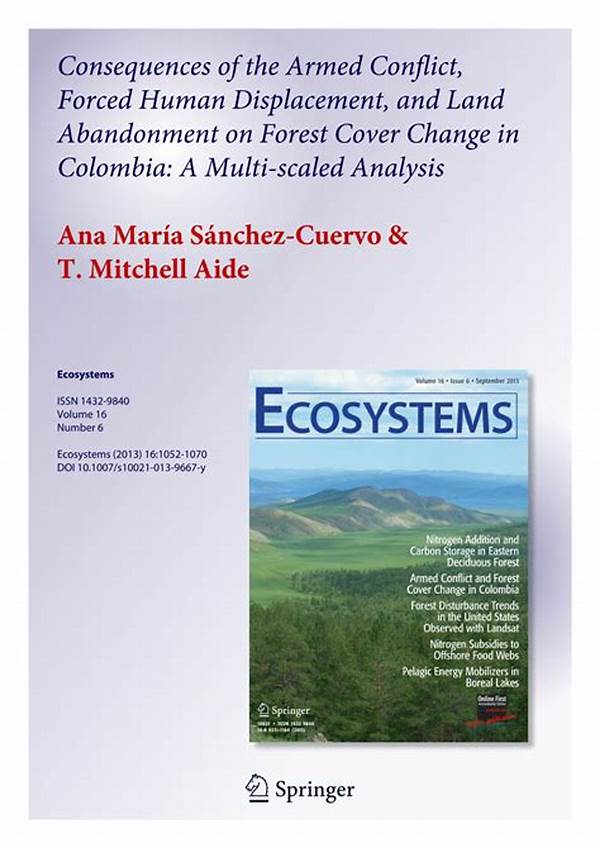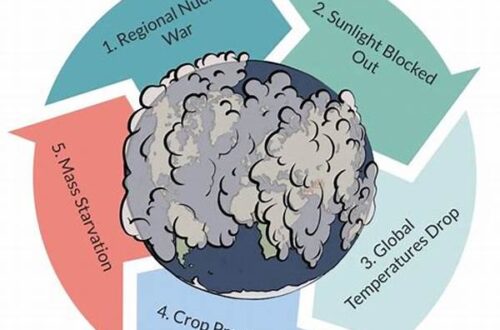Armed conflicts are invariably accompanied by a range of adverse implications, extending beyond human tragedy and regional destabilization. One pertinent aspect that requires considerable attention is the environmental degradation resulting from such conflicts. Armed conflict environmental consequences are multifaceted and deeply entwined with the ecological balance, potentially triggering a cascade of long-term detrimental effects. This article endeavors to elucidate various dimensions of these consequences, highlighting their intricate nature and pressing the need for mitigative strategies.
Impact of Warfare on Natural Resources
One significant dimension of armed conflict environmental consequences is the direct impact on natural resources. Military operations frequently involve destructive activities, including bombings and land incursions, leading to deforestation, soil degradation, and pollution of water bodies. The disruption of ecosystems exacerbates biodiversity loss, which can have irreversible repercussions on both local and global scales. Furthermore, armed conflicts often prompt uncontrolled extraction of minerals and other resources, spurred by the demand for funding war efforts. Such exploitative practices result in resource depletion and habitat destruction, imperiling environmental sustainability. Addressing these challenges necessitates comprehensive international cooperation and stringent regulations to mitigate the environmental footprint of conflicts.
Pollution and Chemical Contamination
1. Armed conflict environmental consequences encompass chemical contamination resulting from the use of advanced weaponry. Explosives and chemical arms contribute to soil and water pollution.
2. The deployment of hazardous substances during conflicts poses severe risks to human health and ecosystems, warranting immediate attention.
3. Environmental remnants of warfare, including unexploded ordnance, perpetuate polluting effects long after hostilities cease.
4. The degradation of air quality due to the combustion of military materials exemplifies the profound environmental impact of armed conflicts.
5. Efforts to dispose of warfare residues must be executed with diligence to preclude enduring ecological damage.
Displacement and Habitat Change
Armed conflict environmental consequences significantly encompass forced displacement and subsequent habitat change. Conflicts often precipitate large-scale migrations of people seeking refuge, which places immense pressure on host environments. The sudden influx of displaced populations can lead to overexploitation of local resources, including water, land, and wildlife, further straining ecological networks. Consequently, fragile habitats may suffer from deforestation and soil erosion as displaced individuals seek to establish makeshift communities and cultivate land. Additionally, the abandonment of conflict zones may result in the unchecked proliferation of invasive species, which can disrupt the natural balance and lead to unintended ecological transformations. Thus, recognizing and addressing the environmental dimensions of forced displacement is vital for both humanitarian and ecological resilience.
Long-Term Ecological Damage
1. Armed conflict environmental consequences lead to long-term degradation of ecosystems, extending the impact indefinitely.
2. Disrupted ecosystems often witness altered species composition and reduced biodiversity.
3. The contamination of natural habitats with military waste contributes to persistent ecological challenges.
4. The rehabilitation of war-torn environments is often a protracted and resource-intensive process.
5. Scarcity of natural resources due to armed conflict exacerbates post-conflict recovery challenges.
6. Long-term damages often necessitate substantial investments in restoration and sustainable management efforts.
7. Understanding the magnitude of these consequences is critical for developing effective post-conflict recovery strategies.
8. Conservation efforts must prioritize regions affected by armed conflict environmental consequences to ensure sustainable ecological restoration.
9. International collaboration is essential in addressing the transboundary nature of environmental impacts arising from conflicts.
10. Comprehensive policies aimed at mitigating long-term ecological damage are crucial for sustainable development trajectories.
Rehabilitation and Recovery
Efforts to address armed conflict environmental consequences must prioritize rehabilitation and recovery strategies. The restoration of affected ecosystems demands collaborative initiatives involving governments, environmental organizations, and local communities. Comprehensive assessment of ecological damage is essential to devise effective restoration plans. Reforestation, soil stabilization, and waste management practices are imperative for rehabilitating ecosystems disrupted by conflict. Furthermore, restoring biodiversity through reintroduction of native species can help in revitalizing ecological functions and processes. The integration of environmental considerations into peacebuilding efforts is crucial to ensure sustainable recovery. Collaborative research and sharing of best practices can enhance global capacities to mitigate and recover from conflict-induced environmental degradation.
Policy and International Cooperation
To effectively address armed conflict environmental consequences, robust policy frameworks and international cooperation must be established. Multi-lateral agreements emphasizing environmental protection during and post-conflict are vital in preventing ecological degradation. Implementing stringent international environmental standards can serve as a deterrent against detrimental military practices. Additionally, fostering collaboration among international bodies, governments, and NGOs is crucial for sharing knowledge, resources, and expertise. Ensuring that environmental considerations are integral to peace negotiations and reconstruction plans will strengthen resilience against future environmental and social challenges. A coordinated global response is essential to address the complexities and transboundary nature of environmental consequences arising from conflicts.
Conclusion
In conclusion, armed conflict environmental consequences are profound and multifaceted, exerting significant strain on ecological health and biodiversity. The immediate and lasting impacts of military activities on natural resources and habitats underscore the need for urgent intervention and sustainable recovery strategies. Addressing these environmental consequences requires a multi-pronged approach that includes robust policy frameworks, international cooperation, and active involvement of local communities. As the global community strives for peace and security, embedding environmental considerations into conflict resolution and post-conflict rebuilding efforts is imperative. Recognizing and mitigating the environmental dimensions of armed conflict is not only a moral obligation but also a crucial step toward safeguarding ecological and human well-being for future generations.





